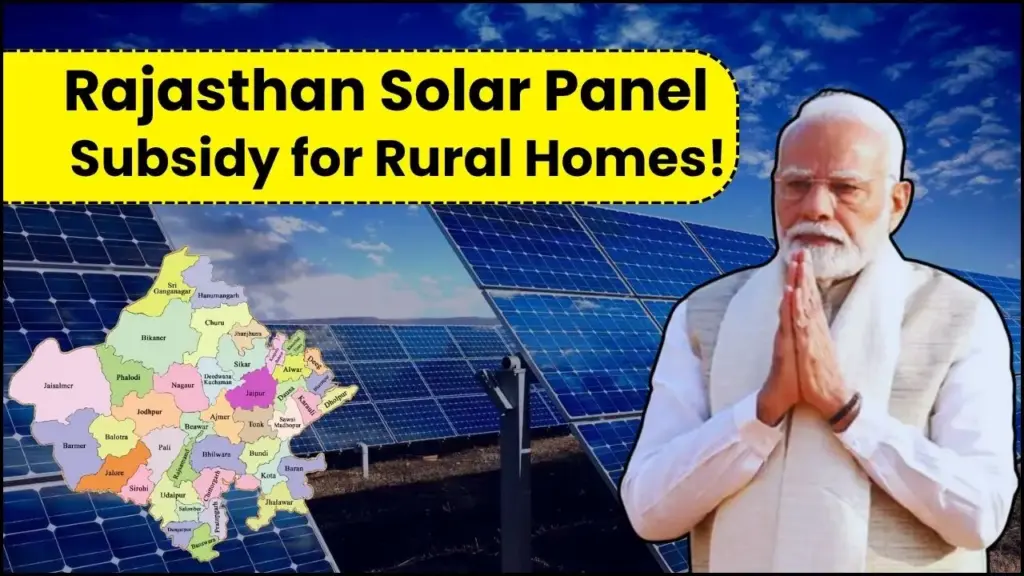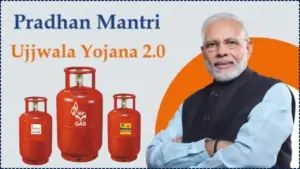Rajasthan is making rooftop solar genuinely affordable for rural households by aligning predictable central subsidies with smoother state-level execution. The result is simpler approvals, faster net metering, and a clean pathway for homeowners to cut electricity bills while gaining reliable daytime power for essentials. With fixed subsidy slabs and a standardized application flow, rural families can plan capacity confidently and get installations approved without endless paperwork loops.

If the goal is to understand eligibility, documents, and the step-by-step process, this guide covers every practical detail for the Rajasthan solar panel subsidy for rural homes. The subsidy slabs are straightforward ₹30,000 for 1 kW, ₹60,000 for 2 kW, and ₹78,000 for 3 kW and above credited after commissioning. Applications are routed through the national rooftop portal, using empanelled vendors and a DISCOM feasibility check, ensuring quality standards, transparent tracking, and timely disbursal.
Rajasthan Introduces Solar Panel Subsidy for Rural Homes
| Key point | Details |
|---|---|
| Program anchor | Residential rooftop route with centralized subsidy and state/DISCOM facilitation |
| Who can apply | Homeowners with a domestic electricity connection and suitable roof; no duplicate subsidy |
| Subsidy slabs | ₹30,000 (1 kW), ₹60,000 (2 kW), ₹78,000 (3 kW and above, fixed) |
| Rural focus | Streamlined feasibility, empanelled vendors, and net metering support |
| Documents | Aadhaar/PAN, latest electricity bill, property/roof proof, bank details, post-installation invoice/photos |
| Application path | National portal → feasibility → install → net meter → inspection → subsidy credit |
| Notes | Use Made-in-India DCR modules; typical scope is on-grid residential systems |
What Is the Rajasthan Rooftop Solar Scheme 2025?
This residential pathway pairs a single national portal with Rajasthan’s on-ground support so rural households can install grid-connected systems without running between offices. By following a clear feasibility-to-commissioning sequence, the process reduces ambiguity and speeds up approvals. The program focuses on on-grid setups so homes can benefit from net metering and standardized inspections.
Key Features of the Scheme
Predictable slabs help families decide the system size based on roof area, daytime usage, and budget. Empanelled vendors handle technical standards, mounting, and documentation that typically slow down first-time applicants. With Rajasthan’s strong sunlight, a 2–3 kW array often offsets a significant share of daytime loads like lighting, fans, and kitchen appliances.
Eligibility and Application Process For Solar Panel Subsidy for Rural Homes
Eligibility rests on homeownership (or authorized roof rights), a valid domestic connection, suitable roof space, and not having claimed a prior rooftop solar subsidy. Applicants must use compliant DCR modules and empanelled vendors to qualify. The flow is: register on the national portal, obtain DISCOM feasibility, proceed with installation, complete net metering, finish inspection, and receive the subsidy in the linked bank account.
How to Apply for the Solar Panel Subsidy for Rural Homes
Start by creating an application on the national rooftop portal and selecting the correct Rajasthan DISCOM. Provide accurate consumer details and KYC to avoid rejections. After feasibility approval, proceed with an empanelled installer who will meet technical standards, finish documentation uploads, coordinate inspection, and close commissioning to trigger subsidy credit.
Subsidy on Rooftop Solar in Rajasthan (2025)
The residential slabs are simple and statewide: ₹30,000 for 1 kW, ₹60,000 for 2 kW, and ₹78,000 for 3 kW and above as a fixed amount. Housing societies follow a separate cap framework for common areas, but most rural homeowners fall in the 1–5 kW band. Funds are transferred after commissioning and verification, so keeping documents clean and consistent is key to faster credit.
Rooftop Solar Subsidy in Rajasthan
Fixed slabs ensure clarity while comparing system sizes and vendors. Using DCR modules and an on-grid design is essential to maintain eligibility from day one. If backup is required, budget batteries separately because hybrid/off-grid configurations generally fall outside the typical residential subsidy’s scope.
What’s the Rooftop Solar Subsidy in Rajasthan?
The 1–3 kW brackets are designed to fit small to mid-sized rooftops common in rural areas, balancing cost and energy yield. A 2–3 kW selection often aligns with daytime consumption and practical roof availability, tightening payback when combined with net metering credits. As electricity tariffs evolve, the savings profile tends to improve over time.
How to Apply for a Solar Subsidy in Rajasthan?
- Register on the national rooftop portal, pick the Rajasthan DISCOM, and fill out KYC and consumer details accurately.
- Wait for technical feasibility approval; do not install before approval to avoid redesigns and delays.
- Use an empanelled vendor with DCR modules, complete net metering, upload post-installation documents, schedule inspection, and receive subsidy after commissioning.
Who is Eligible for a Solar Panel Subsidy in Rajasthan?
- Homeowners with a valid domestic connection, adequate roof space, and no prior rooftop subsidy claim are eligible.
- Systems must be grid-connected and installed by an empanelled vendor using compliant DCR modules.
- Housing societies have separate norms; commercial or off-grid systems typically are not covered.
FAQs on Rajasthan Introduces Solar Panel Subsidy for Rural Homes
How much subsidy can a rural homeowner get in Rajasthan?
Expect ₹30,000 at 1 kW, ₹60,000 at 2 kW, and ₹78,000 for 3 kW and above for residential rooftops, applied after commissioning.
Do battery systems qualify for the subsidy?
Hybrid or off-grid systems typically do not qualify; the program emphasizes on-grid residential systems with compliant components.
What documents are needed to apply?
Keep Aadhaar or PAN, the latest electricity bill, roof/property proof, bank details, and post-installation invoices and photos ready for verification.
Where should applications be submitted?
Use the national rooftop portal to register, track feasibility, complete commissioning, and receive the subsidy credit after inspection.










